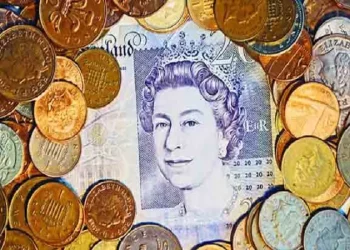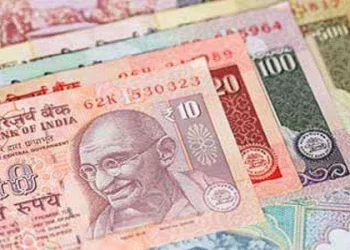The exchange rate between the Pound and the Rupee is not static; rather, it is in a constant state of flux in the highly liquid and volatile foreign exchange market. These fluctuations can occur over short – term intervals, such as minutes or hours, as well as over longer – term periods, like months or years. The reasons behind these fluctuations are numerous and complex, involving a confluence of economic, political, and market – related factors. In the following sections, we will delve deep into these factors, analyze historical trends, and explore how to monitor and even attempt to predict the GBP – INR exchange rate.
Pound – Rupee Exchange Rate
The exchange rate is quoted in the forex market with a bid – ask spread. The bid price is the price at which market makers are willing to buy the Pound in exchange for Rupees, while the ask price is the price at which they are willing to sell the Pound.The difference between the bid and ask rates represents the profit margin for the market makers and also indicates the liquidity and volatility of the currency pair.
Factors Affecting the Pound – Rupee Exchange Rate
Economic Indicators
Interest rates set by central banks play a pivotal role. The Bank of England and the Reserve Bank of India regularly review and adjust their interest rates. When the Bank of England raises interest rates, it makes holding British Pounds more attractive. Higher interest rates mean that investors can earn more on their Pound – denominated deposits. As a result, there is an increased demand for the Pound, leading to its appreciation against the Rupee. For example, if the interest rate in the UK rises from 2% to 3%, foreign investors may be more inclined to deposit their funds in UK banks, increasing the demand for Pounds and pushing up its value relative to the Rupee.
Conversely, if the Reserve Bank of India raises its interest rates, the Indian Rupee may strengthen as it becomes a more appealing currency for investment. A higher interest rate in India can attract foreign investors who want to earn a better return on their investments. They will need to buy Rupees to invest in Indian financial instruments, thus increasing the demand for the Rupee and causing it to appreciate against the Pound.
Inflation Rates
Inflation erodes the purchasing power of a currency. In the UK, if the inflation rate is high, the value of the Pound may decline. High inflation means that the cost of goods and services is rising rapidly. For example, if the inflation rate in the UK is 5% and in India it is 3%, the Indian Rupee may gain value relative to the Pound. This is because the Rupee can buy more in terms of real goods and services compared to the Pound in this scenario.
A country with lower inflation is likely to have a more stable currency. When inflation is low in India, the value of the Rupee is more likely to be maintained or increase. In contrast, high inflation in the UK can lead to a depreciation of the Pound as the currency loses its value over time. Central banks in both countries closely monitor inflation rates and may adjust their monetary policies to keep inflation in check, which in turn affects the exchange rate.
GDP Growth
A strong GDP growth in the UK indicates a healthy economy. This can attract foreign investment, increasing the demand for the Pound. If the UK’s GDP is growing at a faster rate than India’s, more investors may want to invest in UK – based companies or assets. They will need to buy Pounds to do so, driving up the value of the Pound against the Rupee. For instance, if the UK’s GDP grows by 4% in a year while India’s grows by 2%, foreign investors may see more opportunities in the UK and increase their investment, leading to a higher demand for Pounds.
Similarly, a robust GDP growth in India can boost the value of the Rupee. A growing Indian economy can attract foreign direct investment, portfolio investment, and also lead to an increase in exports. All these factors contribute to an increased demand for the Rupee, which can cause it to appreciate against the Pound. A growing economy in India means more business opportunities, higher consumer .
UK Political Developments
Political events in the UK, such as general elections, Brexit – related developments, and changes in government policies, can have a significant impact on the Pound. For example, during the Brexit negotiations, the Pound experienced high volatility. Uncertainty about the future trading relationship between the UK and the European Union led to fluctuations in the Pound’s value. If the UK government announces policies that are seen as business – friendly and conducive to economic growth, the Pound may strengthen.
Indian Political Landscape
In India, political stability is also crucial. Elections at the national and state levels, changes in economic policies by the government, and geopolitical tensions in the region can affect the Rupee. A stable government with clear economic policies is likely to attract foreign investment, which can support the value of the Rupee. For example, if the Indian government announces policies to boost infrastructure development and attract foreign investment, it can lead to an increased demand for the Rupee.
However, political unrest or policy uncertainty may lead to a depreciation of the Rupee. Protests, political scandals, or sudden changes in economic policies can create a sense of instability in the market. Foreign investors may become hesitant to invest in India, leading to a decrease in the demand for the Rupee and a subsequent depreciation.
Trade Balance
UK’s Trade with India
The trade balance between the UK and India is an important factor. If the UK exports more goods and services to India than it imports, there is a trade surplus. In this case, India needs to buy more Pounds to pay for its imports from the UK. This increased demand for Pounds can cause the Pound to appreciate against the Rupee. For example, if the UK exports high – tech machinery and pharmaceuticals to India and imports mainly textiles and agricultural products, and the value of exports exceeds imports, the demand for Pounds will be high.
Conversely, if the UK has a trade deficit with India, meaning it imports more than it exports, the UK may need to sell more Pounds to buy Rupees, potentially leading to a depreciation of the Pound. A trade deficit implies that the UK is spending more on Indian goods and services than it is earning from selling its own products to India, which can put downward pressure on the Pound’s value.
India’s Overall Trade Position
India’s trade balance with the rest of the world also affects the Rupee. If India has a large trade deficit globally, it may put pressure on the Rupee as more foreign currency is needed to pay for imports. This can make the Rupee weaker against the Pound. A trade deficit means that India is importing more goods and services than it is exporting, which requires it to use more foreign currency, such as the US Dollar or the Pound. As a result, the supply of Rupees in the foreign exchange market increases, while the demand for foreign currencies rises, leading to a depreciation of the Rupee.
A positive trade balance, however, can strengthen the Rupee. When India exports more than it imports, it earns more foreign currency. This can increase the demand for the Rupee as foreign buyers need to purchase Rupees to pay for Indian exports. A strong export performance can also indicate a healthy and competitive domestic economy, which further supports the value of the Rupee.
Conclusion
The exchange rate between the British Pound and the Indian Rupee is a multifaceted and dynamic economic variable. It is influenced by a complex interplay of economic indicators such as interest rates, inflation rates, and GDP growth in both the UK and India. Political stability in these countries also wields a significant impact, with elections, policy changes, and geopolitical events causing fluctuations in the exchange rate. The trade balance between the two nations and their overall trade positions globally are additional crucial factors that determine the relative value of the Pound and the Rupee.
Related topics:























